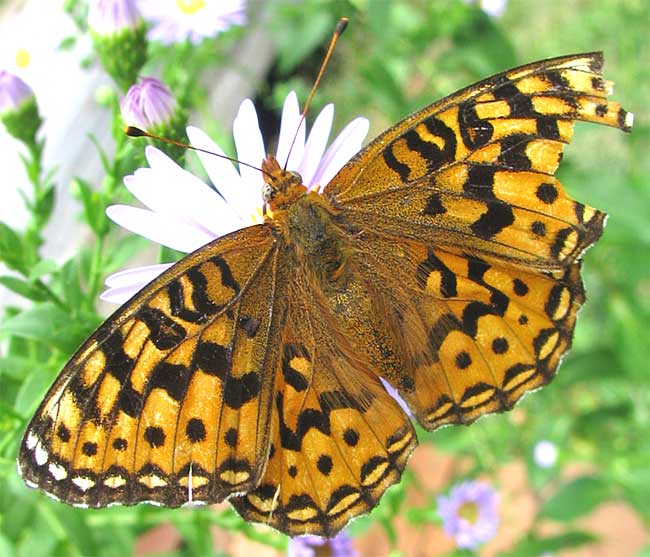Excerpts from Jim Conrad's
Naturalist Newsletter

from the September 20, 2009 Newsletter, issued from the Siskiyou Mountains west of Grants Pass, Oregon:
FRITILLARY ON THE ASTERS
Above you can see a butterfly species that's been flitting around Anita's spectacular blue garden-asters this week. The moment I saw them I pegged them as fritillaries because of their similarity to the Mexican Fritillaries often seen during my Querétaro days, and the Gulf Fritillaries back in Mississippi. But, this one was different, so which species was it?
*UPDATE: In 2009 with my "Butterflies and Moths of North America" field guide -- in which this species wasn't illustrated -- I could only guess at this butterfly's identity using lists of fritillary species found here, and read word descriptions of various fritillary species, and I guessed wrong. In 2024 I revisit this page. So many new identification resources are on the Internet that now it was easy to see that this was ARGYNNIS ZERENE, the Zerene Fritillary.
Zerene Fritillaries occur in the US northwestern states and adjacent Canada. There's much variation in the species' appearance, with certain authorities recognizing them and others not. Some of the recognized subspecies are in decline and are in danger of extinction.
Zerene Fritillary larvae feed on violet species, genus Viola, so any disturbance of the landscape that extirpates violets will kill off Zerene Fritillaries, too.